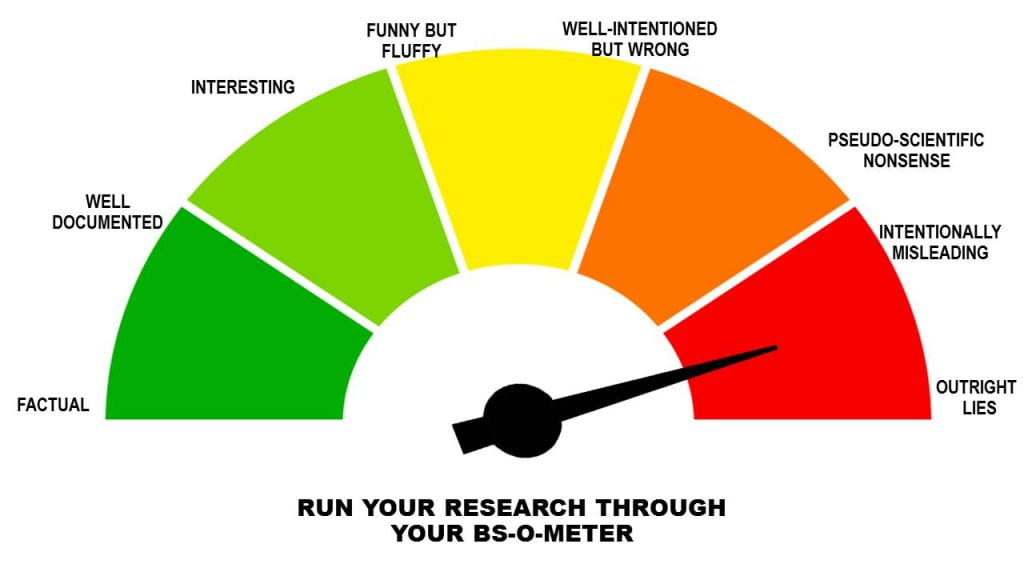I enjoyed the CRAAP test video , CRAAP rubric and Get REAL rubric, and I was searching for information seeking processes and look what I found! A BS-O-Meter! I can’t remember what forum discussion I was in that mentioned we needed one of these, but voila! Here it is! (I will put it into the forum discussions later):

These devices help us teach the digital literacy aspect of information literacy. What is information literacy? I have grown to understand it better and better and particularly found this quote to be important:
“Understanding information literacy as a catalyst for learning necessitates a move away from exploring textual practices towards incorporating an understanding of the sociocultural and corporeal practices that are involved in coming to know an information environment” (Loyd 2007, pp. Abstract).
Information Literacy is but one form of the the vast aspects of literacy, sometimes referred to as multi-literacies, multi-modal pedagogy or trans-literacy. And basically what it boils down to is that, because of the multiplicity of literacy, educators (including TLs!) need a “pedagogical repertoire” in order to teach all aspects and forms of literacy (Kalantzis & Cope 2015).
I am heartened by the American Library Association (2016): “Information literacy forms the basis for lifelong learning. It is common to all disciplines, to all learning environments, and to all levels of education. It enables learners to master content and extend their investigations, become more self-directed, and assume greater control over their own learning. … …Information literacy, while showing significant overlap with information technology (digital literacy) skills, is a distinct and broader area of competence.”
According to the ALA, (2016) we must help our students become information literate individuals who can:
-
- “determine the extent of information needed;
- access the needed information effectively and efficiently;
- evaluate information and its sources critically;
- incorporate selected information into one’s knowledge base;
- use information effectively to accomplish a specific purpose; and
- understand the economic, legal, and social issues surrounding the use of information, and access and use information ethically and legally” (ALA 2016).
In the Teacher Librarian field, inquiry teaching models have been identified as the best means for enabling information literacy in students.
Maniotes and Kahlthau (2014) explain that inquiry teaching models support the information literacy (and research) for all ages because it is learning centred and focuses on emotionally stimulating questioning and deep understanding rather than product-driven answering and fact finding.
The inquiry teaching model is not presently taught very often or with rigour in most educational settings and this is where, according to Maniotes and Kahlthau (2014), the TL is vital!
In the upper years (age 9 and above) the use of Guided Inquiry Design (GID) is one of the models that is popular. Maniotes and Kahlthau describe it as a framework of inquiry learning design, as represented in 8 sequential phases “Open, Immerse, Explore, Identify, Gather, Create, Share, and Evaluate” (Maniotes & Kahlthau 2014, pp.Abstract).
As I teach the younger years predominantly, I have chosen to work with the Super3 and Big6 Inquiry teaching models and I am hopeful that I can do the pedagogy justice. I am certainly going to give it my best shot!
References
ALA (2016). Information Literacy Competency Standards for Higher education. Retrieved from: https://alair.ala.org/handle/11213/7668
Lloyd, A. (2007). Recasting information literacy as sociocultural practice: Implications for library and information science researchers. Information Research, 12(4).
Kalantzis, M. & Cope, B. (2015). Multiliteracies: Expanding the scope of literacy pedagogy. New Learning.
Lloyd, A. (2007). Recasting information literacy as sociocultural practice: Implications for library and information science researchers. Information Research, 12(4).
Maniotes, L. K., & Kuhlthau, C. C. (2014). MAKING THE SHIFT. Knowledge Quest, 43(2), 8-17. Retrieved from https://search-proquest-com.ezproxy.csu.edu.au/docview/1620878836?accountid=10344
Young, L. (2019). BS-O-Meter. [Image]. Retrieved from: https://libguides.furman.edu/medialiteracy/framework
